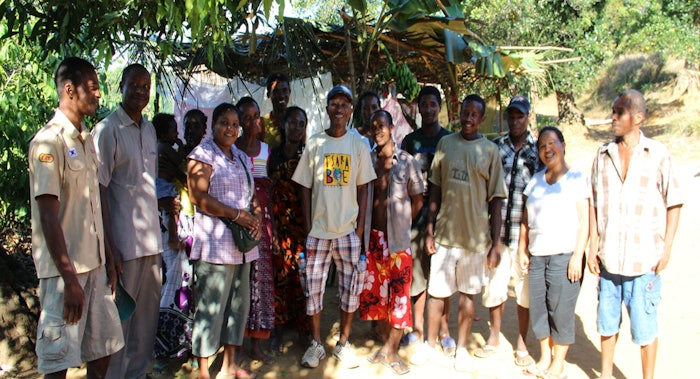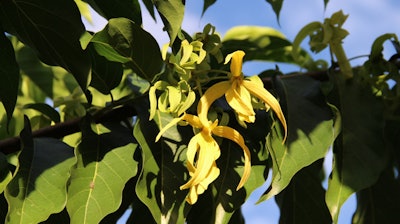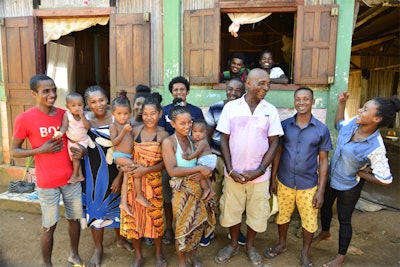
Nosy Be is an island that sits off the northwest coast of Madagascar. The name means “big island,” and while it may not have the size of its mainland counterpart, Nosy Be has incredible biodiversity. It is also the center of Madagascar’s ylang-ylang industry, containing dozens of family-owned plantations and hundreds of smaller orchards. The Cananga odorata tree, more commonly known as “ylang-ylang,” is extremely well-adapted to Nosy Be’s climate. A single tree can grow more than 6 feet each year, reaching heights of over 100 feet across a lifetime. These trees are capable of producing 20-25 kilos of flowers per year and can maintain this enormous output for over 30 years.

Ylang-ylang flowers are extraordinarily rich in essential oils; it only takes around 40 kilos of fresh flowers to produce one kilo of oil.
To supervise such rampant growth, ylang-ylang trees require constant pruning by farmers. Methods developed on Nosy Be have allowed locals to keep the trees at human size, which makes them much easier to harvest. These pruning methods also place additional pressure on the tree to produce flowers, making ylang-ylang even more plentiful than it already is. This results in a tremendous quantity of ylang-ylang flowers available for harvest; the average picker can collect around 15 kilos of flowers in a single morning.
Beyond their abundance, ylang-ylang flowers also have the benefit of being extremely rich in essential oils. A single kilo of ylang-ylang oil only requires around 40 kilos of fresh flowers; for comparison, rose oil requires about 4000 kilos or four metric tons of flowers to yield a single kilo of oil. With such high availability and efficiency across the island, it’s of little surprise that Madagascar is able to churn out around 65 metric tons of ylang-ylang oil every year. Throughout this production process, numerous fractionations are also derived from the oil, allowing for even greater diversification. These fractionations primarily consist of Ylang-Ylang Extra, Ylang-Ylang #1, Ylang-Ylang #2, and Ylang-Ylang #3, each of which are taken at different stages (or “cuts”) of the oil’s production.

Ylang-ylang oil provides a dependable source of daily income for countless harvesters and distillers across Nosy Be and beyond.
The odor of each fractionation differs slightly, though all of them are unmistakably aromatic and complex, containing a desirable blend of floral, sweet and spicy notes. As a result, the so-called “generous tree” can provide a steady income to countless farmers and distillers throughout Nosy Be. Berjé’s operation alone provides daily income to around 100 pickers and their families; this group collectively owns around 20,000 trees and is capable of harvesting over 300 metric tons of ylang-ylang flowers every single year.
From its origins in Southeast Asia to its current powerhouse status in Madagascar, ylang-ylang has remained a remarkable tree with a truly giving spirit. It can produce more flowers in a single day than some plants will produce during an entire season and will continue to grow strong after decades of harvesting. For the residents of Nosy Be, ylang-ylang represents a reliable source of income at any time of the year. The abundance of the tree, paired with its consistency and efficiency, has made it the perfect choice for those looking to expand within Madagascar.
To request a sample or learn more about the production and usage of ylang-ylang oil, please visit our website at BerjeInc.com.
Disclaimer:
The above paid-for content was produced by and posted on behalf of the Sponsor. Content provided is generated solely by the Sponsor or its affiliates, and it is the Sponsor’s responsibility for the accuracy, completeness and validity of all information included. Global Cosmetic Industry takes steps to ensure that you will not confuse sponsored content with content produced by Global Cosmetic Industry and governed by its editorial policy.










